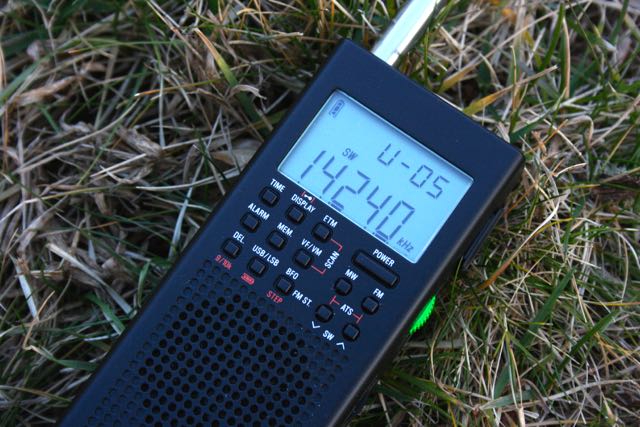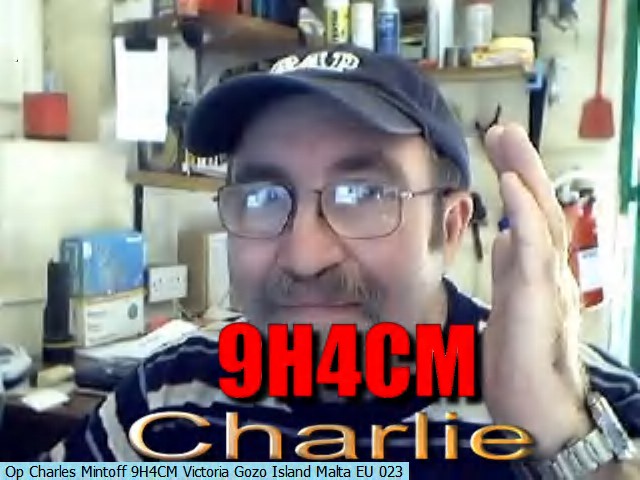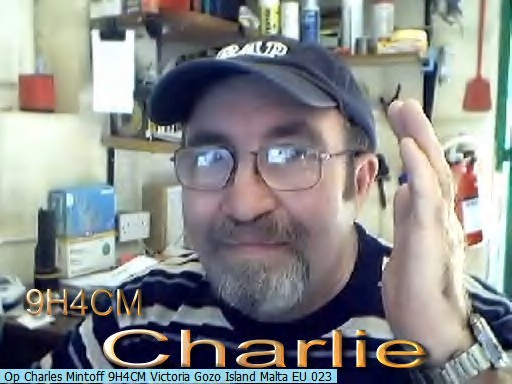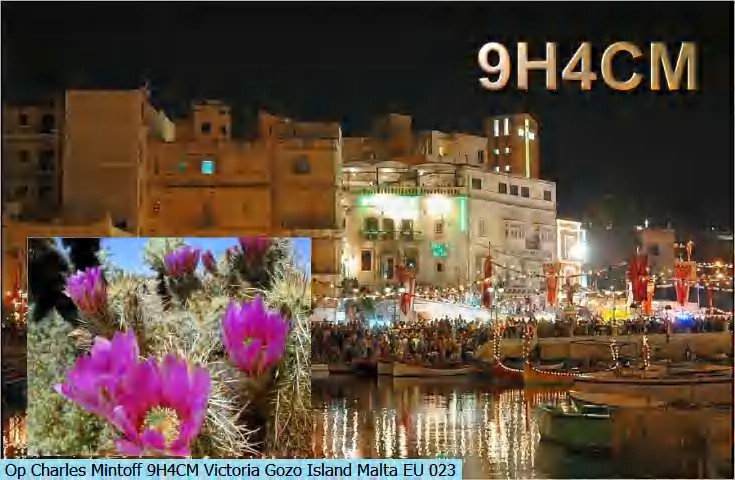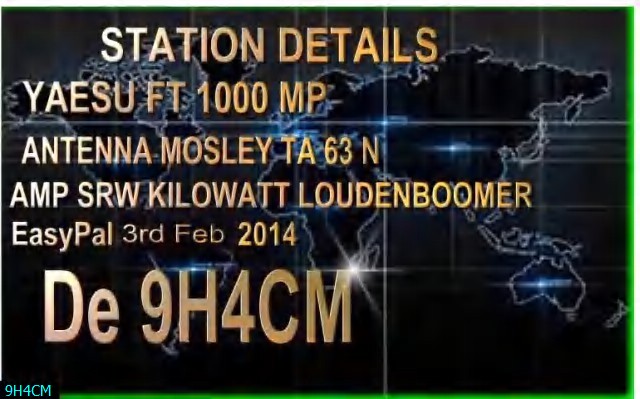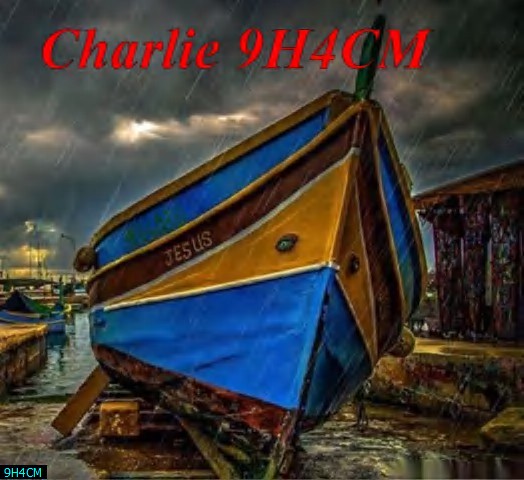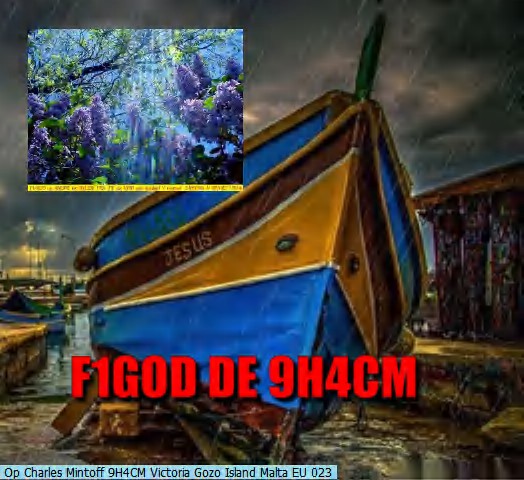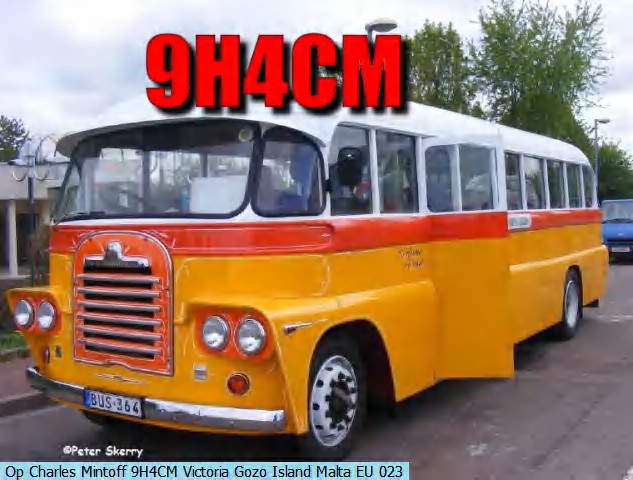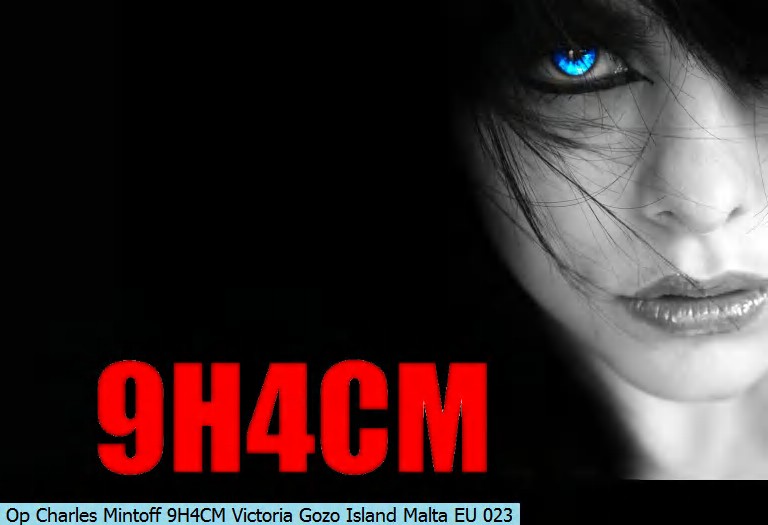www.rhci-online.net/radiogram/radiogram.htm
██████╗ ██╗ ██████╗ ██╗ ██████╗ ██╗ ██╗
██╔══██╗██║██╔════╝ ██║ ██╔══██╗╚██╗██╔╝
██║ ██║██║██║ ███╗██║ ██║ ██║ ╚███╔╝
██║ ██║██║██║ ██║██║ ██║ ██║ ██╔██╗
██████╔╝██║╚██████╔╝██║ ██████╔╝██╔╝ ██╗
╚═════╝ ╚═╝ ╚═════╝ ╚═╝ ╚═════╝ ╚═╝ ╚═╝
RSID: <<2016-03-13T11:00Z
MFSK-32
@ 6070000+1500>>
Hello and welcome to the fourth episode of DigiDX, a review
of the latest shortwave and DX news broadcast in the MFSK32 mode. This broadcast
includes shortwave news and reception reports and a feature
which is an article by Akos Czermann from
http://www.rtlsdr4everyone.blogspot.co.uk/ on how to avoid being
ripped off when buying an RTL-SDR.
Also included after the news is an attempt to broadcast a MIDI audio file in
MFSK128L mode.
DigiDX Schedule for March - including new WRMI relays to North America.
Episode 4 - Friday 11th March :
0930UTC - 1000UTC - 6070kHz (Channel 292-DE)
Episode 4 - Friday 11th March : 1600UTC - 1630UTC - 6070kHz
(Channel 292-DE)
Episode 4 - Sunday 13th March : 1100UTC - 1130UTC - 6070kHz
(Channel 292-DE)
Episode 4 - Sunday 13th March : 1230UTC - 1300UTC - 6070kHz
(Channel 292-DE)
Episode 4 - Sunday 14th March : 2330UTC - 0000UTC - 11580kHZ (WRMI-US)
Episode 5 - Friday 18th March : 2000UTC - 2030UTC - 6070kHz
(Channel 292-DE)
Episode 5 - Sunday 20th March : 1100UTC - 1130UTC - 6070kHz
(Channel 292-DE)
Episode 5 - Sunday 20th March : 1230UTC - 1300UTC - 6070kHz
(Channel 292-DE)
Episode 5 - Sunday 20th March : 2330UTC - 0000UTC - 11580kHZ (WRMI-US)
Episode 6 - Friday 25th March: 2000UTC - 2030UTC - 3985kHz
(Radio 700-DE)
Episode 6 - Saturday 26th March : 2000UTC - 2030UTC - 6070kHz (Channel
292-DE)
Episode 6 - Sunday 27th March : 1100UTC - 1130UTC - 6070kHz
(Channel 292-DE)
Episode 6 - Sunday 27th March : 1230UTC - 1300UTC - 6070kHz
(Channel 292-DE)
Episode 6 - Sunday 27th March : 2330UTC - 0000UTC - 11580kHZ (WRMI-US)
Please keep checking our Facebook
https://www.facebook.com/digidx/)
or Twitter (https://twitter.com/digi_dx)
page for details of any extra broadcasts planned.
Latest Shortwave News:
Mighty KBC ends 6095kHz transmissions and doubts about 6040kHz
HFCC A16 schedules to be released
Icom IC-R75 to be discontinued
WRTH Update
Mighty KBC ends 6095kHz transmissions and doubts about
6040kHz
Mighty KBC have announced on their Facebook page (https://www.facebook.com/TheMightyKbc/)
that the broadcasts on Sunday to Europe on 6095kHz from the Nauen transmitter
will end on the 27th March.
Weekday transmissions on this frequency from KBC ended on
27th November. KBC have recently appealed for new sponsors or donations to keep
going and it appears that these appeals have not brought enough money in to
continue on 6095, The broadcast from 2300 - 0200 UTC Saturdays to North America
is also under threat with the Mighty KBC Facebook status promising an update on
the 6040kHz broadcasts soon.
The last broadcast on 6095 will be on Sunday 27th March between 0900-1600UTC,
broadcasts in the Netherlands on 1602Khz and DAB+ will continue.
HFCC A16 schedules to be released
The High Frequency Co-ordination Conference group are due to release A16 Season
schedules from the many broadcasters who met in Istanbul during January to
co-ordinate shortwave frequencies from 27th March - 29th October 2016.
The A16 schedules for the broadcasters who are members of the HFCC is set to be
released around the 13th March on
http://www.hfcc.org/data/a16/ . Most major international broadcasters and
Frequency Management Organization’s are member of the HFCC which is lead by
chairman Jeff White, also General Manager of WRMI. However some broadcasters
such as Radio Habana Cuba and Radio Taiwan International are not members of HFCC
and therefore their schedules will not appear on the HFCC site.
Icom IC-R75 to be discontinued
Dave's Radio Receiver Page (http://webpages.charter.net/n9ewo2/news.html)
have published information that Icom are to discontinue and probably not replace
their popular IC-R75 reciever. The radio which has been on the market for 16
years is still in stock at many
shortwave radio specialists meaning now is the last change to buy the approx
$600 receiver new.
World Radio TV Handbook Update
There have been some speculation that the current 2016 edition of the World
Radio TV Handbook will be the last, however the editor Sean Gilbert has taken to
Facebook to post the following update:
“There seems to be a rumour going around about WRTH no longer printing . I do
not know where this rumour started - The publisher has made no announcement, and
it has not been the subject of any meetings we have had. At this time WRTH is
considering adding more
digitally downloadable material to its list of products. No decision has been
made as to how long we will continue providing a printed edition. We will
continue to do so for as long as it is financially viable. To summarise: WRTH
has no plans to stop producing a
printed edition. Even if, at some point in the future, we decided to go 'all
digital', we would still offer a printed edition - albeit at an increased price
- due to the costs of small print runs for 'print on demand' customers. I am
writing this as both Internationa
l Editor of WRTH, and on behalf of WRTH Publications Ltd.”
The next segment of this broadcast is in MFSK128L mode and features a Base64
encoded MIDI file of a famous shortwave radio interval signal/signature tune.
To
convert to MP3 go to http://www.digidx.uk/midi.php
or go to
http://www.motobit.com/util/base64-decoder-encoder.asp
choosing to decode the data and export to file, the file can then be
renamed a .MID file and opened in Winamp or similar software.
RSID: <<2016-03-13T11:09Z
MFSK-128L @ 6070000+1500>>
Start of MFSK128L mode MIDI file encoded in Base64 format. To decode and convert
to MP3 paste into http://www.digidx.uk/midi.php
or use another base64 decoder
and MIDI file player (e.g. WinAmp).
--START--
TVRoZAAAAAYAAQACAYBNVHJrAAAAzgD/fw8FDxwyMDE2LjAyLjA0AQMA/38sBQ8tTWljcm9zb2Z0
IFNhbnMgU2VyaWYsOC4yNSxGYWxzZSxGYWxzZSwxLDAA/380BQ8SAwN/fwD/AQQoU3BlYWtlcnMg
KFJlYWx0ZWsgSGlnaCBEZWZpbml0aW9uIEF1ZGlvKQD/Aw1jb250cm9sIHRyYWNrAP8BCWNyZWF0
b3I6IAD/AR5HTlUgTGlseVBvbmQgMi4xNC4yICAgICAgICAgICAA/1gEBgMSCAD/UQMHoSAA/y8A
TVRyawAABH4A/38FBQ8JTEgA/38uBQ8GR2VuZXJhbCBNSURJIC0gTWljcm9zb2Z0IEdTIFdhdmV0
YWJsZSBTeW50aAD/WAQGAxIIAMBJAP8EBWZsdXRlAJBDWgD/WQIBAADASYIgkEMAAJBFWmCQRQAA
kENagUCQQwAAkEdagwCQRwAAkEdagUCQRwAAkEVagiCQRQAAkEdaYJBHAACQRVqBQJBFAACQSFqE
QJBIAACQR1qBQJBHAACQSlqBQJBKAACQQ1qBQJBDAACQSFqDAJBIAACQR1qBQJBHAACQRVqBQJBF
AACQQ1qBQJBDAACQQlqBQJBCAACQQ1qEQJBDAACQQ1qCIJBDAACQRVpgkEUAAJBDWoFAkEMAAJBH
WoMAkEcAAJBHWoFAkEcAAJBFWoIgkEUAAJBHWmCQRwAAkEVagUCQRQAAkEhahECQSAAAkEdagUCQ
RwAAkEpagUCQSgAAkENagUCQQwAAkEhagwCQSAAAkEdagUCQRwAAkEVagUCQRQAAkENagUCQQwAA
kEJagUCQQgAAkENahECQQwAAkE9agwCQTwAAkE5agUCQTgAAkE9agwCQTwAAkEpagUCQSgAAkEpa
gUCQSgAAkExagUCQTAAAkE1agUCQTQAAkExagwCQTAAAkEpagUCQSgAAkEpagUCQSgAAkExagUCQ
TAAAkE5agUCQTgAAkE9agUCQTwAAkEpagUCQSgAAkExagUCQTAAAkEpagUCQSgAAkEhagUCQSAAA
kEdagUCQRwAAkEVagwCQRQAAkEpagUCQSgAAkExagUCQTAAAkEpagUCQSgAAkEhagUCQSAAAkEda
gUCQRwAAkEhagUCQSAAAkEpagUCQSgAAkExagUCQTAAAkEpagUCQSgAAkEhagUCQSAAAkEdagUCQ
RwAAkEhagUCQSAAAkEpagUCQSgAAkExagUCQTAAAkE9agUCQTwAAkENagUCQQwAAkEhagwCQSAAA
kEdagUCQRwAAkEVagUCQRQAAkENagUCQQwAAkEJagUCQQgAAkENahECQQwAAkE9agwCQTwAAkE5a
gUCQTgAAkE9agwCQTwAAkEpagUCQSgAAkEpagUCQSgAAkExagUCQTAAAkE1agUCQTQAAkExagwCQ
TAAAkEpagUCQSgAAkEpagUCQSgAAkExagUCQTAAAkE5agUCQTgAAkE9agUCQTwAAkEpagUCQSgAA
kExagUCQTAAAkEpagUCQSgAAkEhagUCQSAAAkEdagUCQRwAAkEVagwCQRQAAkEpagUCQSgAAkExa
gUCQTAAAkEpagUCQSgAAkEhagUCQSAAAkEdagUCQRwAAkEhagUCQSAAAkEpagUCQSgAAkExagUCQ
TAAAkEpagUCQSgAAkEhagUCQSAAAkEdagUCQRwAAkEhagUCQSAAAkEpagUCQSgAAkExagUCQTAAA
kE9agUCQTwAAkENagUCQQwAAkEhagwCQSAAAkEdagUCQRwAAkEVagUCQRQAAkENagUCQQwAAkEJa
gUCQQgAAkENahECQQwAA/y8A
--END--
The programme now returns to MFSK32.
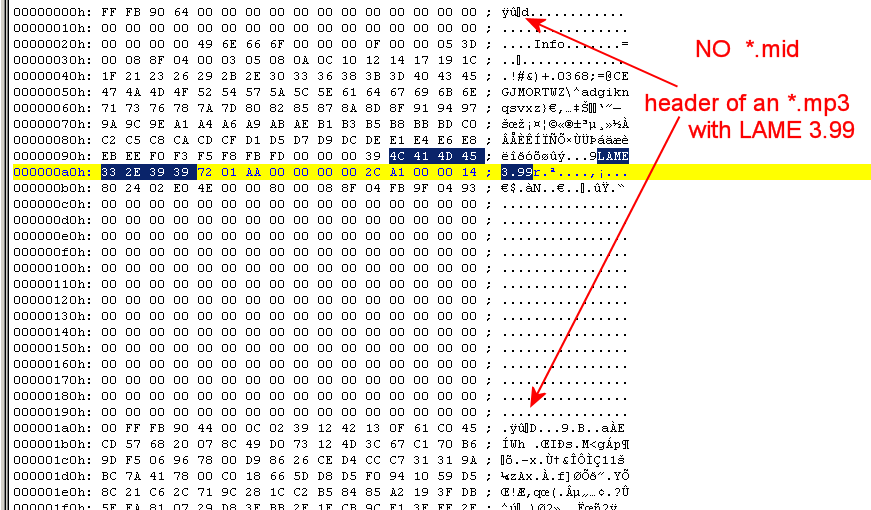
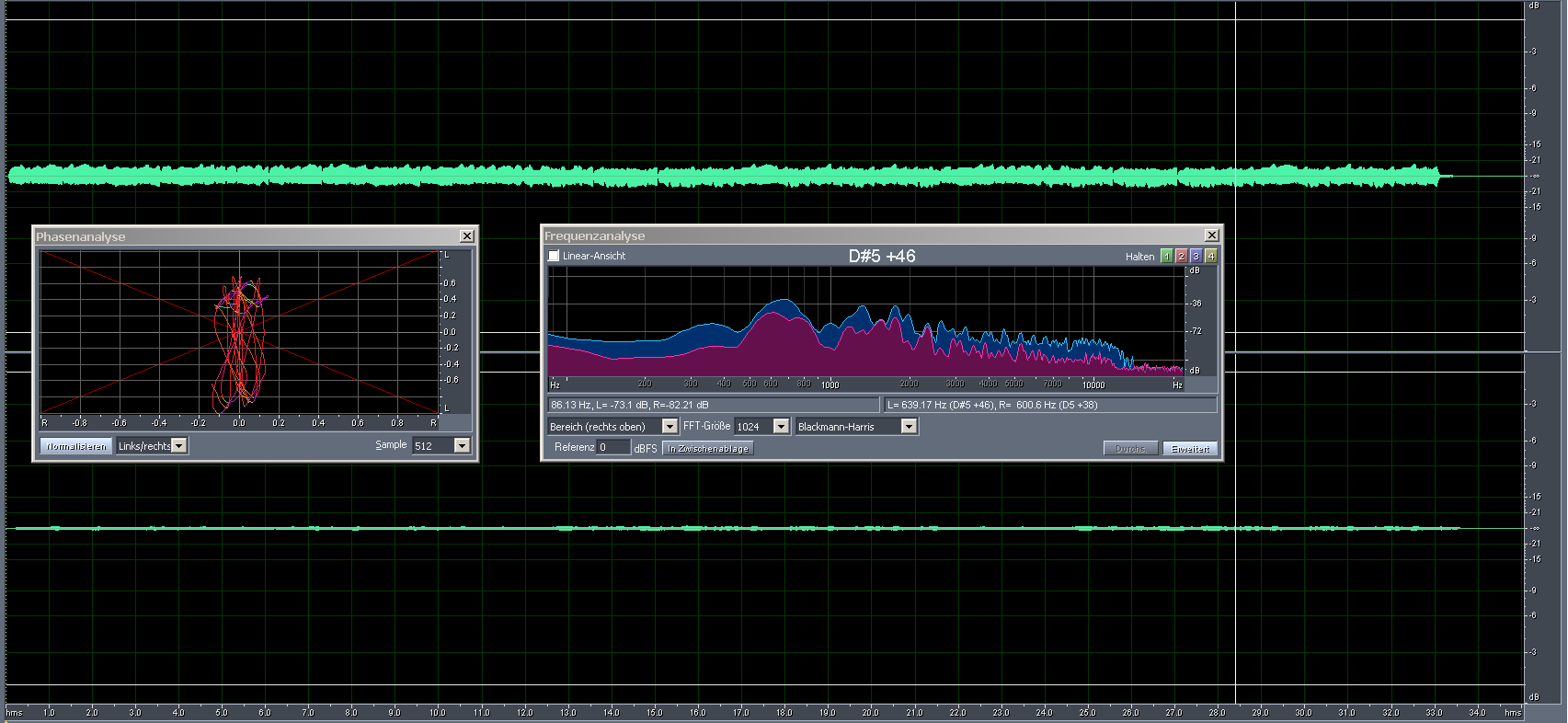
RSID: <<2016-03-13T11:10Z
MFSK-32 @ 6070000+1500>>
DigiDX continues in MFSK32 mode.
Upcoming relays and special broadcasts:
Alaska based DJ Paul Walker has a 2 hours show of rock n roll and country music
on several Shortwave Frequencies this week:
WRMI 11580khz - 0100 - 0300utc on Friday March 11th
Channel 292, 6070khz 2205 - 0005 UTC Friday/Saturday March 11th/12th
WBCQ 5130khz and 9330khz - 0300 - 0500 UTC Saturday March 12th
Channel 292 have added a large number of special broadcasts in the month of
March. These include Radio Waves International, Grooveline, Encore Radio, Radio
Hobart International, Geronimo Shortwave and every Monday at 2105 UTC - Radio
Northern Ireland. To see the
full schedule for their 6070kHz frequency go to
http://www.channel292.de/
.
VOA Radiogram will be on air at the following times and frequencies over each
weekend, the transmission is normally in MFSK32 but also includes other digital
modes.
VOA Radiogram transmission schedule
(all days and times UTC):
Sat 0930-1000 5865 kHz
Sat 1600-1630 17580 kHz
Sun 0230-0300 5745 kHz
Sun 1930-2000 15670 kHz
All via the Edward R. Murrow transmitting station in North Carolina.
For full details of the programme to be transmitted and the modes used go to
http://voaradiogram.net/
Gilles Létourneau who runs the excellent OfficialSWLchannel channel on Youtube
has another radio related Hangouts this week with his VHF/Scanner hangout on
Saturday at 2100.
To watch the hangouts or any of his videos go to
https://www.youtube.com/user/OfficialSWLchannel
Now follows this weeks feature “Avoid RTL dongle Rip-Offs” by Akos Czermann from
http://www.rtlsdr4everyone.blogspot.co.uk/
Unscrupulous sellers on Ebay and other online marketplaces charge an
unjustifiably large excess due to the increased popularity of RTL dongles.
This is due to 1) unsuspecting buyers, 2) lack of information and 3) prosperity
of developed nations. An extra 5-6 dollars won't break the bank when the median
US household income in 2015 was in excess of 50,000 dollars.
At the other end of the scale, over 2 billion (write it down: that's more than
2,000,000,000 individuals) live on less than $3.10 a day.
Money does matter.
This post serves primarily as background information for prospective readers of
the upcoming RTL-SDR Guide book, and in connection with the previously published
review of RTL dongles - products featured in that post are available from other
sources, so it's relevant
information.
1. Selling Brands at a higher price (plus high shipping charges)
Ordering directly from the manufacturer will definitely mean that warranty will
be honored, and you get customer support via email and / or phone.
As of February 2016, the two best-known companies are Nooelec and RTL-SDR.com.
Both have an online store, both stores are easy to use, both offer Credit Card
and Paypal payment options - why would anyone use an marketplace (e.g. eBay) for
brand name RTL dongles?
Exactly the same model as in the 5-dongle comparison review
(
http://www.rtlsdr4everyone.blogspot.co.uk/p/review.html
) , standard R820T
chipset, no temperature controlled oscillator. Same accessories. eBay Total
cost: over $50. Nooelec cost: $22.95 ($17.95 + $5
International Tracked Shipping).
It's not only one seller, let's buy an R820T2, it is better and the one to get.
Ripoff Total: $53.69. Manufacturer Total: $26.95. Enough? No?
Check out RTL-SDR.com's Silver dongle:
Ripoff total: $50.16. Manufacturer total: $19.95, free worldwide shipping from
China. Oh, only dongle for 50 bucks, no antennas. This is not as clear-cut as
the other two, as the Silver dongle was out of stock for a while due to high
demand, and shipping from the
States is always more expensive than shipping from China.
Khmm, somehow Nooelec manages $5 for tracked shipping...
And to close the argument:
Ripoff Total: $86.4. Manufacturer total: $24.99. Case closed.
Conclusion: If buying a brand-name RTL dongle, always buy directly from the
manufacturer!!!
2. The fake E4000 ads
The E4000 chipset was used in the earliest RTL dongles - until the manufacturer
went out of business. Due to rarity and price - once selling for over $100 - it
is a sort of "cult" stick, the holy grail, the magic USB device pulling in
signals across the globe etc
(Review soon).
The only source for a brand new E4000 chipset right now is from Nooelec, $42.95
in non-TCXO flavor or $49.95 for the TCXO-equipped version. Check out the real
deal on the image - if the dongle you bought does not have the Elonics E4000
chip as illustrated, you've
been conned.
Common words in the title are "E4000 upgrade" and "successor upgrade". Upon
closer inspection the title also reveals that R820T, or maybe an R820T2 is used,
costing anything up to $20 or more.
Real-looking E4000 chipsets can be found, will be expensive: 50 dollars is more
than Nooelec charges for an equivalent version, which come with 1-year warranty.
[And peace of mind. I received the E4000 TCXO above with the other dongles
featured in the 5-dongle review, but the actual dongle did not function
properly. Nooelec customer support returned my email with "it's probably damaged
in transit, we'll send you another".
Try that with an Ebay seller.]
3. Shiny and expensive
I have not tested the product below, and will retract this statement the very
second the manufacturer sends me a review sample and proves me wrong, but $59.99
for an old-generation R820T in an aluminum housing is simply too much, even with
TCXO. Probably the housing
is milled from a solid piece of a aircraft-grade aluminium, or features a
built-in coffee maker.
To get prices in perspective, RTL-SDR.com's metal housing is rock solid (took
the PCB out and stood on the empty case, no trouble), offers the better R820T2
chipset and costs 19.99 shipped. On the other side of the fence, top-of-the-line
Blue Nooelec with a Nooelec
metal case (review soon) will set you back $40 with 2-year warranty.
OK I got the point! I only have less than $10 - what should I buy?
An RTL dongle for less than $10, with free shipping from China (or domestic if
you get a good deal). Spending more than 20 dollars is absolutely unnecessary,
unless you need fancy extras like TCXO, willing to pay more for brand names or
absolutely have to own an
E4000 tuner.
Try to find the newer R820T2 chipset, several examples available for a maximum
of 8 dollars. For example, search for R820T2 and get one for seven dollars.
I've written extensively about what you can achieve with this this no-frills
setup and some ingenuity in my upcoming book.
You get an usable magnetic antenna base and a small antenna with an R820T2
tuner.
Ten dollars is quite a lot for literally billions of people, but at least now
you know that 's all you need to spend to get started without getting ripped
off.
If you enjoyed this article please pre-order Akos Czermann’s RTL-SDR Guide Book
on Amazon Kindle/PC/Smartphone. More than a hundred pages of knowledge,
information and diagrams for all levels of expertise.
http://www.amazon.com/RTL-SDR-Everyone-Second-including-Raspberry-ebook/dp/B01C9KZKAI/
Reception Reports
Thank you for all the reception reports sent in for episode 3 which was
transmitter on 6070kHz on Wednesday at 1930, Friday at 2000, Saturday at 1930,
Sunday at 1100 and Sunday at 1200. Remember for details of all upcoming
transmissions including late changes to the
schedule like DigiDX on Facebook at https://www.facebook.com/digidx/
.
Most of these broadcasts included the main programme at 1500Hz and a large
segment of Alan Roe’s Music on Shortwave listing on 600Hz.
Wim Haarmann in Belgium decoded both and wrote :
“Reception on 6070 kHz at 11.00 UTC on 1016-03-06 was sinpo 55555 as you can see
from the text attachments. Both the 1500Hz as well as the 600Hz decoding was
perfect.
The picture is somewhat less exact, because of less error correction as I was
told by Kim from the VOA Radiogram.
My QTH is Maaseik Eastern Belgium and I use a Lowe HF150 connected to a 2 x 7
metres dipole.”
Thanks for your report Wim.
On Twitter Andrea Borgnino (@aborgnino) tweeted about the Friday broadcast and
the over the air eQSL card in particular saying - “Nice to see my name on
shortwave ! Thanks to @Digi_DX”. Thanks Andrea, we try to include everyone who
has emailed, tweeted or posted on
our Facebook page in the over-the-air QSL, if you are not included please email
reports@digidx.uk
and we'll make sure you are in next week's eQSL.
Mark Hurst from the UK also listened to the Friday broadcast on his ICOM IC-7200
with a Wellbrook ALA1530LNP loop and wrote “As others have said, it's great that
you are also experimenting with digital modes - so keep up the good work!”
Thanks Mark, glad you enjoy the broadcasts.
In Spain Ricardo Saiz for the same broadcast again has emailed in to say:
“I have received today's program on 6.070. I began a bit late, about 20:12z, so
I missed the beginning. I ran two instances of fldigi, on 600 and 1500 Hz. The
text copy was mostly error free. The picture was a bit noisy but readable. My
location is Madrid, Spain.”
From Northern Italy listening on Sunday at 1100 Emiliano Rocchetta emailed
reports@digidx.uk
to say:
“I hope your projects can goes on, because others european broadcasters could in
future start program in digital modes, renewing interest on short and, why not,
medium wave broadcastings.
Thank you and 73, ciao”
Thanks and 73’s to you too Emiliano, hopefully other broadcasters do trial
digital modes on shortwave.
Andreja Kostić found out about an unscheduled broadcast on Saturday at 1930 via
our Facebook page where we tested sending a MIDI file via MFSK128. This was a
precursor to the MIDI file that is included in this broadcast. Although Andreja
couldn’t decode the MIDI he
sent in some tips which have been used for this broadcast:
“The first MFSK32 segment was received without any errors. Unfortunately, during
the MFSK128 reception, I got one fade, which damaged the file. Since you're
sending I file, might I suggest use of MFSK128L? The relatively long
interleaving should help a lot with short
fades and I don't think that ~10 seconds of extra content needed for interleaver
would be a too great of an issue for the program length.”
...
“Maybe it would be a good idea to pad the start of the file with space
characters and new lines?”
Hopefully with your suggestions Andreja, you and others will be able to decode
the MIDI file included in this broadcast.
Now follows a MFSK32 image of this week's QSL card. Please send in pictures of
your radios, shacks and listening stations and these will be included in a
montage as part of next weeks QSL card.
Sending Pic:466x266;
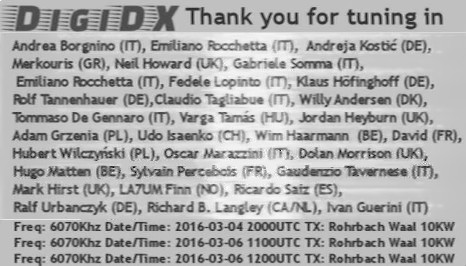
Shortwave Radio Website of the Week
Shortwave Heaven - http://www.shortwavetimes.com/
The Shortwave Heaven site includes very useful printable PDF charts for easy
schedule viewing for broadcasts in English and other languages to North Western
Europe. The site also includes special charts for all BBC World Service
broadcasts indicating which on which
frequencies and times reception will be best for the BBC WS in North West
Europe.
Thanks everyone for listening and please keep sending any reception reports,
comments or suggested stories to reports@digidx.uk
Thank you for listening, this is DigiDX signing off.....
██╗ ██╗██████╗ ██████╗ ██████╗ █████╗ ██████╗ ██╗ ██████╗ ██████╗ ██████╗ █████╗ ███╗ ███╗
██║ ██╔╝██╔══██╗██╔════╝ ██╔══██╗██╔══██╗██╔══██╗██║██╔═══██╗██╔════╝ ██╔══██╗██╔══██╗████╗ ████║
█████╔╝ ██████╔╝██║ ██████╔╝███████║██║ ██║██║██║ ██║██║ ███╗██████╔╝███████║██╔████╔██║
██╔═██╗ ██╔══██╗██║ ██╔══██╗██╔══██║██║ ██║██║██║ ██║██║ ██║██╔══██╗██╔══██║██║╚██╔╝██║
██║ ██╗██████╔╝╚██████╗ ██║ ██║██║ ██║██████╔╝██║╚██████╔╝╚██████╔╝██║ ██║██║ ██║██║ ╚═╝ ██║
╚═╝ ╚═╝╚═════╝ ╚═════╝ ╚═╝ ╚═╝╚═╝ ╚═╝╚═════╝ ╚═╝ ╚═════╝ ╚═════╝ ╚═╝ ╚═╝╚═╝ ╚═╝╚═╝ ╚═╝
|
http://www.kbcradio.eu/
RSID: <<2016-03-13T0221Z
MFSK-32 @ 6040000+1500>>
This CountyComm GP-5-SSB is one of the many shortwave radios
reviewed at The SWLing Post ...
http://swling.com/blog/shortwave-radio-reviews/
Please report this decode to
themightykbc@gmailcom
facebook.com/TheMightyKBC
kbcradio.eu
██╗ ██╗ ██████╗ █████╗ ██████╗ █████╗ ██████╗ ██╗ ██████╗ ██████╗ ██████╗ █████╗ ███╗ ███╗
██║ ██║██╔═══██╗██╔══██╗ ██╔══██╗██╔══██╗██╔══██╗██║██╔═══██╗██╔════╝ ██╔══██╗██╔══██╗████╗ ████║
██║ ██║██║ ██║███████║ ██████╔╝███████║██║ ██║██║██║ ██║██║ ███╗██████╔╝███████║██╔████╔██║
╚██╗ ██╔╝██║ ██║██╔══██║ ██╔══██╗██╔══██║██║ ██║██║██║ ██║██║ ██║██╔══██╗██╔══██║██║╚██╔╝██║
╚████╔╝ ╚██████╔╝██║ ██║ ██║ ██║██║ ██║██████╔╝██║╚██████╔╝╚██████╔╝██║ ██║██║ ██║██║ ╚═╝ ██║
╚═══╝ ╚═════╝ ╚═╝ ╚═╝ ╚═╝ ╚═╝╚═╝ ╚═╝╚═════╝ ╚═╝ ╚═════╝ ╚═════╝ ╚═╝ ╚═╝╚═╝ ╚═╝╚═╝ ╚═╝
http://voaradiogram.net/
RSID: <<2016-03-12T16:01Z
MFSK-32 @ 17580000+1
500>>
Welcome to program 154 of VOA Radiogram from the Voice of
America.
I'm Kim Andrew Elliott in Washington.
Here is the lineup for today's program, all in MFSK32, except
where noted:
1:35 Program preview (now)
2:50 Tsunami sends Japanese fish to Oregon*
8:07 Molten metal may improve sun power*
13:16 VPNs blocked in China*
19:16 VOA Chinese on China VPNs**
21:03 Orchids at the U.S. Botanic Garden*
24:06 Closing announcements*
26:36 Olivia 64-2000: Contact information
* with image
** requires UTF-8 (Fldigi: Configure > Colors & Fonts > Rx/Tx Character set)
Please send reception reports to radiogram@voanews.com
.
And visit voaradiogram.net.
Twitter: @VOARadiogram
VOA NEWS
Tsunami's Hitch-hiking Marine Life Find Refuge in Oregon
Tom Banse
March 10, 2016
NEWPORT, OREGON - The Oregon Coast Aquarium is home to hundreds
of aquatic species ... including two that arrived unexpectedly
after a trip across the Pacific, trapped in the hull of a
derelict fishing boat.
Their story began five years ago, on March 11, when Japan was
shaken by the largest earthquake ever to hit the island nation.
The quake and resulting tsunami left more than 15,000 people
dead, and crippled several nuclear reactors.
As the waters rolled back out to sea, so did millions of tons of
debris. It began washing up on West Coast beaches in 2012 and a
trickle is still coming in; some of the bigger pieces of flotsam
— fish and other marine life from Japanese waters.
Marine life washed in from Japanese waters
Last April, staff from the Oregon Coast Aquarium rescued more
than a dozen yellowtail jacks and one striped beakfish from a
half-sunk, fiberglass wreck coated in seaweed. It was the front
half of a roughly 15-meter-long commercial fishing vessel.
The long-distance hitchhikers were kept in quarantine for six
months before being judged safe and suitable to display in the
Newport aquarium. Assistant curator Evonne Mochon Collura said
DNA testing positively identified the adult fish as native to
East Asian waters.
"We don't know how old they are," she said. "We don't know how
long they were in the hull. It's possible they got washed into
the boat hull when they were small."
They probably survived by nibbling on sea life that grew inside
the hulk and whatever else washed in.
Foreign fish
The beakfish shares its tank with a second beakfish that was
pulled up in a crab pot two months before the drifting boat hull
showed up off of Newport.
The other new arrivals are in the much larger "Open Sea" tank.
The 11 yellowtail jacks that came through the quarantine period
look like big silver torpedoes with deeply forked yellow tails.
They swim in a tight school around the tank, which also holds
numerous sharks. But Mochon Collura said with a smile that the
sharks are well fed by the aquarium staff to curb their appetite
for the foreign fish.
Full text:
http://www.voanews.com/content/tsumani-hitch-hiking-marine-life-find-refuge-in-oregon-aquarium/3229048.html
Image: A striped beakfish that hitchhiked across the Pacific
Ocean via a probable tsunami wreck now swims at the Oregon Coast
Aquarium. (T. Banse/VOA) ...
Sending Pic:218x110C;

This is VOA Radiogram from the Voice of America.
Please send reception reports to radiogram@voanews.com.
VOA NEWS
Study: Running Sun Power Plant With Molten Metal May Be Cheaper
George Putic, KI4FNF
March 08, 2016
Power plants that work with concentrated solar power use special
molten salt to convert the sun's heat into steam which turns the
generators that produce electricity. Researchers at the Georgia
Institute of Technology say using molten metal instead of salt
may increase the efficiency of the generators. The innovative
design was presented at the recent energy summit in Washington.
While water circulates in this scale model of a concentrated
solar power plant, a full-size plant uses molten salt. But the
man behind the radical new design says using tin instead of
molten salt could make the process dramatically more efficient.
"The main thing that makes it better than the state of the art is
really the fact that by pushing up the temperature we were able
to use a higher efficiency power cycle and the higher efficiency
means for the same size of field you get more power out," said
Asegun Henry of the Georgia Institute of Technology.
Molten tin can get hotter than molten salt, but it cannot flow
through metal pipes. Experimenting in his lab, Henry found that
it easily flows through pipes and valves made of graphite.
"It's machineable so it allows us to make complicated components
like this where you can thread them, you can still use mechanical
interfaces you are used to," said Henry.
His design uses ceramics that can also withstand high
temperatures, do not corrode and do not react with tin. With good
insulation, tin can stay liquid even overnight. So far, all the
critical parts have been tested.
"We can pump liquid metal, we can valve it, and control it, we
can bond these tubes together without getting leaks," explained
Asegun Henry.
Taking into account the size of the required mirror field and the
cost of the special salt, Henry expects using molten tin should
reduce the overall cost of building a concentrated solar heat
plant by as much as 30 percent.
http://www.voanews.com/content/sun-power-plant-with-molten-metal-may-be-cheaper/3226155.html
Image: Screen capture from the video version of this VOA News
story, showing the molten metal used in the experiment ...
Sending Pic:397x208;
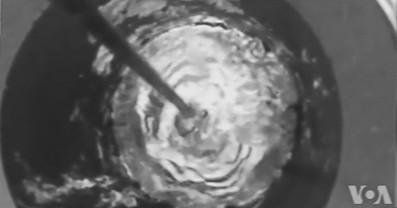
This is VOA Radiogram from the Voice of America.
Please send reception reports to radiogram@voanews.com.
From Radio Free Asia:
Beijing Puts Another Brick in the 'Great Firewall'
2016-03-10
As the National People's Congress convenes, the Chinese
government is attempting to plug the hole virtual private
networks have drilled through the "Great Firewall" as Beijing
shores up the complex system of blocks, filters and human
censorship the government uses to control speech on the Internet.
Many Internet users in China rely on VPNs to get around the
"Great Firewall," the nickname used for the barriers Beijing
erects to limit the content users in the country can see --
including sites from overseas media organizations and other
politically sensitive content.
Guangzhou-based rights activist Jia Pin said he has been unable
to scale the Great Firewall for the past week.
"I used to use ... software that worked really well, and never
had any problems before, but I haven't been able to climb the
wall in the past week or so," Jia told RFA's Chinese Service.
"The VPN isn't working very well either, especially in Guangzhou,
where the problem seems to be worse."
Jia said many of his friends reported similar problems.
"I think it's to do with the parliamentary sessions ... because
I've never seen this before," he said.
Another Internet user in Guangzhou, Liu Sifang, reported similar
issues.
"It's still possible to get around because I have several
different VPNs, and I can switch between them," Liu said. "But
sometimes it's hard to connect to the VPN server, or the
connection needs to be repeatedly reset."
Speed tests
Informal speed testing carried out by the Tips for China blog
showed varying speeds, with many VPN services blocked on Sunday,
the second day of the annual session of the National People's
Congress, the blog reported in an update on Thursday.
The blog also reported intermittent service and slow speeds on
VPNs run by VyprVPN and ExpressVPN.
One service provider cited the annual parliamentary sessions in
Beijing as the reason for the problems.
"Due to political meetings in Beijing, VPN access from China may
be limited," the Astrill virtual private network service tweeted
ahead of the National People's Congress annual session, which
runs from March 5-15.
"We ask for your patience. Thanks for understanding," the tweet
said.
One Twitter user commented: "@astrill, I did not sign up for a
two year contract for this … already without VPN for one week in
China! Has affected my business, not happy."
Without a VPN, many online services run by foreign companies like
YouTube, Facebook, Twitter and Instagram are blocked.
Reported by Qiao Long for RFA's Mandarin Service, and by the
Cantonese Service. Translated and written in English by Luisetta
Mudie.
Full text:
http://www.rfa.org/english/news/china/beijing-puts-another-brick-in-the-great-firewall-03102016115833.html
Sending Pic:163x154C;
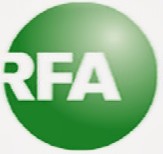
VOA also covered the China VPN story, in Chinese ...
中国当局两会期间封锁VPN服务
美国之音
2016.03.10
中国当局在人大政协两会期间加紧对VPN的封锁,让这种能绕过中国当局防火墙和审查的互联网连接无法在中国
使用。VPN是虚拟专用网的简称,能绕过中国当局的防火墙。
VPN服务提供商Astrill在一份简短的声明中说,"由于北京召开政治会议,审查收紧,此时进入VPN
可能受到限制。请耐心等候,我们在设法解决此问题。"
Full text:
http://www.voachinese.com/content/china-blocks-vpn-20160309/3227505.html
Image: Orchids on display at the U.S. Botanic Garden, one block
from VOA headquarters in Washington. Photo taken by Diaa
Bekheet/VOA ...
Sending Pic:266x194C;

Please send reception reports to radiogram@voanews.com.
And visit voaradiogram.net.
Twitter: @VOARadiogram
Thanks to colleagues at the Edward R. Murrow shortwave
transmitting station in North Carolina.
I'm Kim Elliott. Please join us for the next VOA Radiogram.
This is VOA, the Voice of America.
Sending Pic:632x56C;

RSID: <<2016-03-12T16:27Z
OL 64-2K @ 17580000+1500>>
Please send reception reports to radiogram@voanews.com.
And visit voaradiogram.net.
Twitter: @VOARadiogram
www.rhci-online.net/radiogram/radiogram.htm
DRM-images
-
received
via EASYPAL/DSSTV
on 14233kHz/USB (FRG-100
/ Dipol for ~12 MHz)
Here are
some pictures of
9H4CM [Charlie Mintoff from Gozo Island near Malta] received in the last
days (March 2016):
https://sites.google.com/site/charlesmintoff/home





